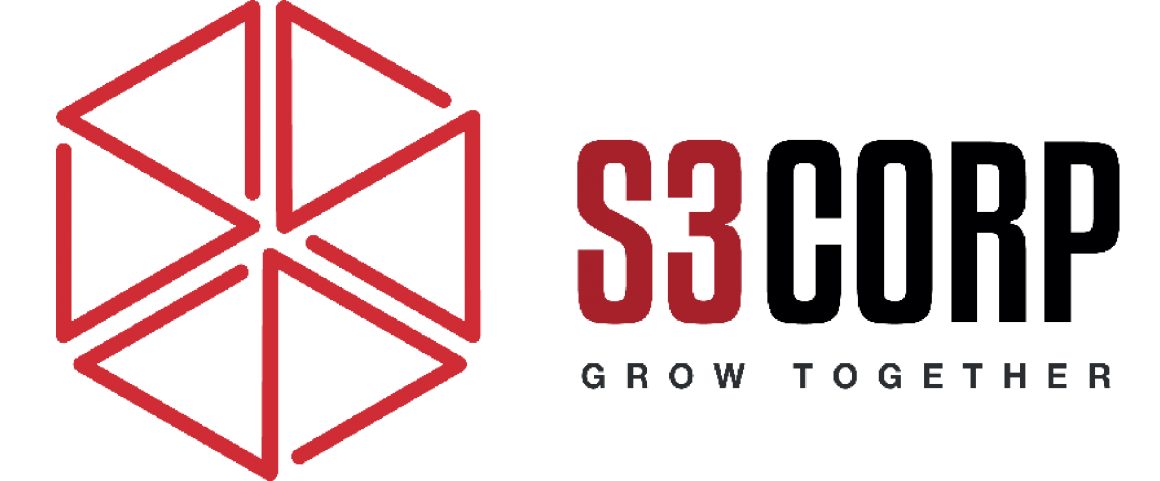Outsourcing Engagement Models: Overview and Detailed Guidance
— October 15, 2018Outsourcing is not just about transferring tasks from one company to another; it is a strategic collaboration that requires careful planning and deliberate execution. When approached correctly, outsourcing can drive innovation, elevate product development, and expand capabilities beyond what internal teams may achieve alone. However, to fully leverage the benefits of outsourcing, businesses must carefully select and implement the right engagement model for their specific needs.
This article provides an in-depth look at outsourcing engagement models, offering clarity on their characteristics and practical advice on choosing the most suitable approach for software development projects.
What is an Engagement Model in Outsourcing?
An engagement model is a framework that outlines how a client and an software outsourcing provider collaborate. It establishes the division of responsibilities, defines governance structures, and sets the foundation for long-term partnerships. The effectiveness of an engagement model depends on its alignment with project requirements, business goals, and the nature of the client-provider relationship.
There is no universally superior engagement model. Each has its strengths and weaknesses, making them suitable for different scenarios. Understanding these models is critical to making informed decisions that maximize the potential of outsourced partnerships.
Tactical Engagement Models
Tactical engagement models are ideal for short-term needs or narrowly focused projects. These models prioritize specific deliverables or temporary workforce augmentation without requiring deep integration between the client and the outsourcing partner.
Staff Augmentation
Staff augmentation allows businesses to extend their in-house teams by incorporating external professionals. This model is particularly appealing for cost-efficient task execution. Companies often use this approach to fill skill gaps or scale their workforce temporarily.
In staff augmentation, the client retains control over project management and technical leadership. Outsourced team members handle defined tasks, such as development or testing, under the client’s supervision. This model is most effective for straightforward technical assignments where requirements remain stable.
However, staff augmentation limits the creative input and decision-making opportunities of outsourced professionals. This restriction may lead to underutilization of the talent available, especially when working with highly skilled providers. While it can be a cost-effective solution, it does not encourage innovation or active involvement in shaping the product’s direction.
Project-Based Outsourcing
Project-based outsourcing is well-suited for scenarios where project requirements are clearly defined and remain stable throughout development. In this model, the outsourcing partner takes full responsibility for delivering a specified outcome. This includes planning, execution, and final delivery.
This model’s strength lies in its ability to reduce costs and shorten development timelines. However, it is not suitable for projects with frequently changing requirements or those requiring ongoing collaboration beyond the initial scope. In such cases, strategic models like Offshore/Nearshore Development Centers or Product Development Services are better alternatives.
Tactical Consultancy
Tactical consultancy involves outsourcing specific expert-driven services on a short-term, fixed-price basis. Clients often seek these services for specialized needs such as UX design, technology advisory, cybersecurity, or localization. The outsourcing vendor provides focused expertise unavailable in-house, delivering solutions within a defined timeframe.
This model works well for addressing immediate challenges but does not support broader or ongoing collaboration. For businesses requiring deeper engagement, strategic consultancy models offer a more comprehensive approach.
Strategic Engagement Models
Strategic engagement models focus on long-term partnerships designed to foster innovation, enhance collaboration, and align the outsourcing provider’s efforts with the client’s broader business goals. These models often involve shared responsibilities and greater integration.
Offshore/Nearshore Development Center (ODC/NDC)
The Offshore/Nearshore Development Center model offers an adaptable approach to outsourcing, enabling clients to access dedicated teams managed by the outsourcing vendor. While clients retain control over product requirements, the vendor handles team management and day-to-day operations.
This model is versatile and suitable for various scenarios, including full-cycle product development, legacy system modernization, and ongoing maintenance. It provides clients with a scalable, reliable resource base that can adapt to changing project needs.
For clients seeking a higher level of innovation and strategic involvement, this model can serve as a foundation for deeper collaboration. However, for maximum value, clients may consider transitioning to models like Product Development Services 2.0.
Product Development Services 2.0 (PDS 2.0)
Product Development Services 2.0 represents the most advanced strategic engagement model. In this approach, the outsourcing partner becomes a co-creator, actively contributing to the product’s success rather than merely executing predefined tasks. The relationship is outcome-driven, motivating the vendor to optimize and innovate continuously.
Under this model, both parties share responsibility for the product’s success, with the outsourcing partner contributing technical expertise and strategic insights. This deep collaboration ensures that the client benefits from ongoing improvements and innovative updates even after the product’s release.
PDS 2.0 is ideal for businesses looking to establish long-term, innovation-driven partnerships. By aligning incentives and fostering collaboration, it maximizes the value of outsourcing relationships.
Strategic Consultancy
Strategic consultancy expands on the principles of tactical consultancy, offering long-term, holistic solutions that improve business processes and product quality. This model addresses multiple aspects of the client’s operations, driving meaningful changes through technological advancements.
Unlike its tactical counterpart, strategic consultancy fosters deeper integration between the client and the outsourcing provider. It is particularly effective for businesses undergoing transformation or seeking to implement comprehensive digital strategies.
How to Choose the Right Engagement Model
Selecting the right engagement model is a critical decision that hinges on a clear understanding of your business goals, project requirements, and long-term objectives. The decision-making process involves evaluating how different models align with your needs, which can vary from immediate, tactical goals to longer-term strategic ambitions. It’s important to remember that each model has strengths suited to particular types of projects, and the best choice will ensure efficiency, cost-effectiveness, and long-term value.
Assessing Project Scope and Requirements
The first step in selecting an appropriate engagement model is to thoroughly assess the project’s scope and requirements. Projects can be classified as either having fixed or evolving needs. Fixed requirements are well-defined from the outset and unlikely to change significantly over time. These projects are generally best suited for tactical models, which are designed to meet immediate, specific needs. Tactical models are often characterized by a short-term focus and predefined deliverables. They are efficient for projects with clear goals that can be executed within a set timeframe and budget.
On the other hand, projects with evolving requirements require a more flexible approach. In these cases, a strategic model is often the better fit. Strategic models are designed for long-term collaboration and adaptability, allowing for changes and adjustments as the project progresses. This flexibility is crucial when the scope is not fully defined at the start, or when the project’s nature demands innovation and ongoing development.
To make an informed choice, it’s essential to analyze how much the project is likely to change or grow over time. If your project involves high uncertainty or innovation, a strategic model would provide the necessary flexibility. If the project’s goals and deliverables are clear and unlikely to change, a tactical model is the better choice.
Evaluating Vendor Expertise
Another key factor to consider when choosing an engagement model is the vendor’s expertise. Different vendors bring different strengths to the table, and it is essential to match their capabilities with your project’s needs. If your project is focused on innovation or complex problem-solving, a vendor with strong capabilities in strategy and long-term vision will be more beneficial. In this case, a strategic model would provide the partnership you need, as these models typically focus on fostering deeper, more collaborative relationships.
Strategic models benefit from vendors who possess a high degree of expertise and innovation potential. Such vendors are equipped to not only meet the current demands of the project but also to anticipate future needs and offer solutions that align with your broader business strategy. They bring a wealth of experience and knowledge that can help shape the direction of the project, introducing new ideas, methodologies, or technologies that may not have been considered initially.
In contrast, tactical models are often more suited for vendors who specialize in executing predefined tasks efficiently. These vendors may not have the same level of innovation focus, but their expertise in specific areas ensures that they can deliver on the project’s immediate needs with precision and reliability. If your project is short-term or straightforward, this type of vendor may be more aligned with your needs.
Thus, evaluating a vendor’s expertise should not only be about their current capabilities but also their potential to bring innovative solutions and value to your project. For complex and innovation-driven projects, strategic vendors are a better fit, while for projects with defined goals, tactical vendors may be more appropriate.
Considering Long-Term Goals
When selecting an engagement model, it’s also crucial to consider your long-term business strategy and objectives. If the project is part of a broader, ongoing strategy, a strategic engagement model is likely to be the most suitable. Strategic models focus on building long-term relationships and fostering continuous collaboration. They are ideal for projects that align with your company’s long-term vision, where the goal is not just to complete a task, but to establish a partnership that can drive sustained growth and innovation.
For example, if your company is embarking on a digital transformation, working with a strategic vendor allows you to tap into their expertise and collaborate on a multi-phase journey that extends over years. The engagement becomes an ongoing partnership, with frequent touchpoints for realignment and adaptation to new technologies, market trends, and business priorities.
On the other hand, if the project is a one-off initiative or a short-term need, a tactical model is often the better choice. Tactical models are designed to achieve specific outcomes within a defined period. These models focus on delivering results quickly, without the need for long-term commitment or strategic alignment. They are ideal when your focus is on immediate objectives rather than on developing a lasting partnership.
Analyzing Cost vs. Value
Finally, it’s essential to analyze the cost versus the value provided by each engagement model. Tactical models may offer immediate cost savings because they are designed to focus on short-term needs with fixed costs. These models can be a more affordable option when your project has clear, predetermined requirements. However, it’s important to consider whether these cost savings align with the value they generate. Tactical models are often more transactional, focusing on completing tasks as efficiently as possible, but may not provide the same level of strategic insight or long-term benefits.
Strategic models, while typically more expensive, can deliver greater value in the long run. These models are built on collaboration, which can lead to innovations that drive business growth and competitive advantage. For example, a strategic partnership could bring new ideas, processes, or technologies that enhance the project and extend beyond the original scope. Although the upfront costs may be higher, the long-term benefits of a strategic engagement can often outweigh the initial investment.
When analyzing cost versus value, it’s essential to take a long-term view. Short-term savings are important, but so are the potential returns that can come from deeper collaboration, innovation, and adaptability. If your project’s scope and goals suggest that long-term value will be important, then opting for a strategic engagement model might be the best decision. However, if your focus is strictly on immediate results, a tactical model may provide the most cost-effective approach.
Adapting and Evolving Your Engagement Model
Engagement models are not static frameworks; they must evolve to remain effective. Business needs change over time, driven by market dynamics, technological advancements, and shifts in strategic priorities. Regular evaluation of the chosen model is essential to ensure it continues to align with your goals. This might involve scaling operations, integrating new tools and technologies, or exploring innovative approaches to problem-solving. A flexible approach ensures that the model grows with your business, fostering stronger partnerships and better outcomes over time.
By carefully choosing and continually adapting the right engagement model, businesses can build partnerships that not only enhance operational efficiency but also drive innovation and growth. This approach ensures that your collaborations remain relevant and productive, contributing to sustained success in a competitive environment.
Conclusion
Outsourcing can drive significant value when executed strategically. By understanding the various engagement models and their applications, businesses can make informed decisions that align with their goals and maximize the benefits of outsourcing partnerships.
Whether you need a tactical solution for a specific task or a strategic partner for long-term innovation, the right engagement model serves as the foundation for successful collaboration. Evaluate your needs, choose wisely, and remain open to evolving your approach as your business grows. The future of outsourcing lies in building strong, dynamic partnerships that deliver measurable results.











